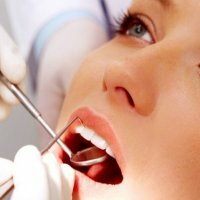How to remove tartar in severe periodontal disease

The most common gum disease is periodontal disease. There are many reasons for this disease. Often it develops against the background of endocrine, gastrointestinal diseases, diabetes. Persons who experience constant stress and stress are prone to gingival inflammation. Periodontal disease, which is often mistakenly considered a severe form of periodontitis, is in fact an independent ailment. This disease usually appears on the background of cardiovascular pathology. The tartar quite often causes bleeding gums, as well as an unpleasant odor from the oral cavity( halitosis), is a direct consequence of the onset of periodontal disease. Tartar is a solid deposit, a coating on the tooth surface that occurs in most adolescents, adults.
How is tartar removed in severe periodontal disease
Unfortunately, periodontal tissue diseases are chronic. Relatively recently, periodontal disease was considered an ailment that can not be cured. Nowadays, there are a lot of tools in the arsenal of dentists, which, if not cured, will stop the disease and prolong the period of remission for many years.
Removal of calculus during severe periodontal disease is possible only with the help of a specialist, after professional cleaning of teeth. It is recommended to do it twice a year. The doctor with hypersensitivity can make anesthesia( often applied a special gel or spray).In general, three methods can be distinguished for the removal of calculus.
The mechanical or instrumental method is as follows. There are subgingival and supragingival dental calculi. The dentist discards them from the tooth surface or pulls them out of the dentogingival pockets. Special tools are used for this. These are hand scalers( they scrape stones from the surface of the teeth);Hoe-shaped and sickle-shaped hooks( intended for interdental spaces);Three-angle, fukatsionny and other excavators( removal of subgingival stone);Zefinga bit( for anterior and anterolateral teeth);Crooked spoons, etc.
The working surface, as well as tool blades, are often made of stainless steel or tungsten carbide. Periodically they are sharpened, as they must be sharp. The expert carefully watches, that at their use soft surrounding fabrics not to injure.
Remove tartar in case of severe periodontal disease by chemical method. Previously, dental deposits were removed by various chemical substances, acids( nitric, trichloroacetic, hydrochloric, lactic, etc.).Modern preparations also contain these acids in very low concentrations. But they have a short duration of exposure, they can damage the mucous membrane and surrounding tissues. Therefore, chemical agents are rarely used.
Removing tartar by ultrasound is very popular these days. The hardened tartar is removed vibrating by means of an ultrasonic scaler. Gums and enamel are not damaged. Then, if you use the treatment( sandblasting) air flow, you can not only clean the teeth, but also the gingival pockets.
Professional cleaning of teeth using an aerosol consisting of water, as well as an abrasive substance, which is sprayed with a directional jet. This method is preferable for people who use orthodontic devices or teeth that are closely adjacent to each other. After this procedure, the teeth become whiter. Usually the achieved effect of the patient satisfies, but it is also possible to whiten teeth to an ideally white color. By the way, it should be noted that the removal of tartar by ultrasound makes it possible to maintain the true color of the teeth constantly.
After the teeth are polished, they are covered with a fluorine-containing compound. It is polished using an abrasive paste. Polished not only the teeth at the same time, but also the previously installed seals.
Contraindications for the removal of calculus in severe periodontal disease
The methods described above for cleaning teeth are contraindicated may be persons with cardiac arrhythmia, chronic lung diseases, endocarditis, and people with implants of either tuberculosis, HIV, and hepatitis at risk.
It should not be thought when removing tartar about complications, because taking into account the specific nature of the removal techniques, complications are unlikely unlike the complications that may occur from the stone itself.



